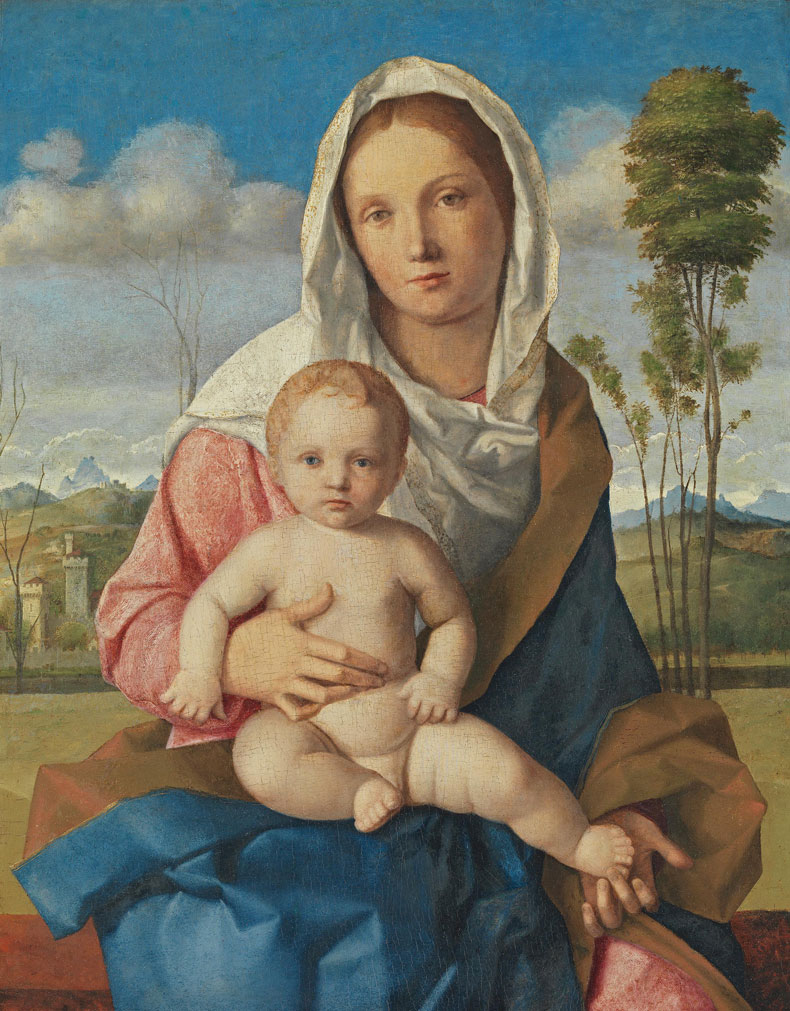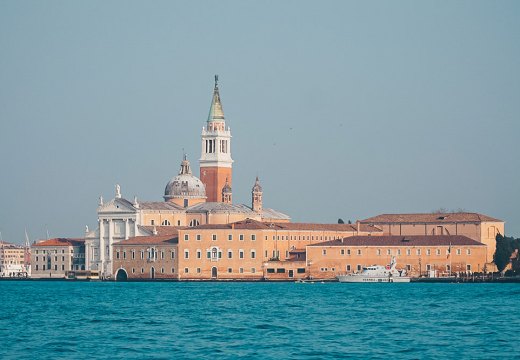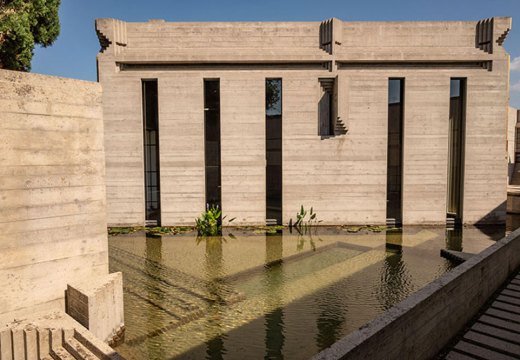From the December 2023 issue of Apollo. Preview and subscribe here.
There are 85 paintings in ‘Venezia 500: The Gentle Revolution of Venetian Painting’ at the Alte Pinakothek in Munich and not one of them shows Venice itself. The minds of the greatest painters at work in the Republic in the first half of the 16th century, from Giovanni Bellini and Giorgione to Titian and Lorenzo Lotto, were, it seems, elsewhere. According to this rich and thoughtful exhibition, they were focused instead on dreams of an Arcadia inspired by the Terraferma – the Venetian territories of the mainland – on the intellectual realm of the most notable citizens, and on the possibilities of paint.
The gentle revolution of the title refers to the way Venetian artists forged major developments in two areas in particular: landscape and portraiture. It is not a comprehensive show – there is, for example, just one Tintoretto (with workshop), and nothing by Veronese, Gentile Bellini or Carpaccio; but, supplementing the gallery’s own substantial collection with international loans, it makes its case with some memorable pictures.
The geographical position of Venice meant that its artists were among the first south of the Alps to learn lessons in both portraiture and landscapes from northern European painters, from Flanders in particular, and from Albrecht Dürer when he arrived in the city in 1505. This was more than a case of adopting the landscape backgrounds of Hans Memling, among others, and giving added Venetian colour. It suggested to painters such as Titian and Giorgione, both born on the mainland, that the interests of the humanist circles in which they moved, with their taste for Virgil’s Eclogues and Theocritus’ Idylls, could find expression in new pictorial subjects. By the 1520s and ’30s, when Marcantonio Michiel was compiling his list of paintings in Venice’s most notable collections, he could distinguish landscape – paese – as a distinct motif.
The exhibition includes not just religious themes posed in the landscape, such as Giovanni Bellini’s surpassingly tender Virgin and Child in a Landscape, c. 1508, in which the setting reflects God’s bountiful creation, but a Titian drawing, c. 1514, from the Metropolitan Museum, New York, showing a cluster of trees on a knoll. It may have been made as a form of preparatory study for the numerous paintings, both sacred and profane, in which woods appear, but shorn of a subject it stands as a piece of poetic observation.

Virgin and Child in a Landscape (c. 1508), Giovanni Bellini. Bayerische Staatsgemäldesammlungen, Alte Pinakothek, Munich
If Bellini represents the religious strand of the Venetian landscape – his example shared by, among others, Palma il Vecchio, Alvise Vivarini and Cima da Conegliano – then Titian’s conception was echoed, with a little less fidelity to nature, by Domenico Campagnola and Jacopo de’ Barbari. There is here too a haunting brown wash drawing of an unpeopled architectural ensemble by Giorgione in which a cluster of buildings coalesces from a dream- like mist. Given the softness of the image, it is perhaps no coincidence that its date, c. 1500, suggests the influence of Leonardo, who visited Venice that year.
This Venetian sfumato re-emerges in Giorgione’s Portrait of a Young Man, c. 1505–10, from the gallery’s own collection, in which the sitter – and he is, with his long nose and pronounced mouth, very much a real person – turns to look over his shoulder and out of the picture. A fur stole suggests a man of means, but this is no record of status or mere physi- ognomy; rather, it is an engagement between sitter and viewer and, avant la lettre, a tronie too. This is a man, Giorgione makes clear, with a hinterland and a story, a man who is intrigu- ing and well worth knowing.
A few years later, the image was repurposed by an unknown but extremely accomplished artist as Christ Carrying the Cross, c. 1515 (Kunsthistorisches Museum, Vienna). His expression is in response to someone calling his name as he trudges to Calvary, but it also makes his coming sacrifice a bond between Christ and the viewer. It is clear that Giorgione’s way of suggesting the narrative and emotional possibilities inherent in a face and a turn of the head set an example quickly followed.
The same twist and contact with the spectator are among the reasons why the exhibition is presenting a previously unattributed double portrait of a young man and his teacher as by Giorgione himself. The picture, say the curators, is the work documented by Giorgio Vasari in 1568 as a Portrait of the young Giovanni Borgherini with his teacher from Venice. Borgherini was the son of a Florentine banker and his teacher was the Venetian polymath Trifone Gabriele, known by contemporaries as the ‘New Socrates’. The painting was in Germany by 1637, carrying the name Giorgione, and the clues within it – an astrolabe, the ages of the figures, the dynamic of the relationship, the colouring, the closeness of Gabriele to a portrait medal by Danese Cattaneo – all correspond to Vasari’s description. Certainly, there is Giorgionesque psychological sophistication in the way the pupil looks at his master as the master looks out at the viewer.
These new traits in both portraiture and landscape were assimilated by painters of every quality. In c. 1520–30, for example, Giovanni Cariani poured a mixture of them into his Portrait of Giovan Antonio Caravaggi (National Gallery of Canada, Ottawa). The image is partly traditional – Caravaggi sits behind a parapet, with his coat of arms on display, next to a laurel bush with symbolic import, and pen, ink and papers to show him as a man of business – and partly novel. Although he wears the composed expression of an altarpiece donor figure, behind him a hilly landscape is dramatically spotlit beneath dark grey, lowering clouds, as if Cariani had been painting to the storm-light of Giorgione’s La Tempesta.
Elsewhere there are fine examples of sensual and idealised belle donne paintings by Palma il Vecchio, Bernardino Licinio and Titian that sit somewhere between portraiture and invention but which are ripe to carry the expectations and desires of the viewer. They are offset by a series of lyrical portraits of young men, such as Francesco Torbido’s rose-holding Portrait of a Young Man, c. 1516, evidence that eroticism and ambiguity were not solely the female preserve. They all contribute to the impression left by this varied and wide-ranging display, that what really happened in Venice in the first five decades of the 16th century was the invention of possibilities.
‘Venezia 500: The Gentle Revolution of Venetian Painting’ is at Alte Pinakothek, Munich until 4 February 2024.
From the December 2023 issue of Apollo. Preview and subscribe here.
Unlimited access from just $16 every 3 months
Subscribe to get unlimited and exclusive access to the top art stories, interviews and exhibition reviews.














![Masterpiece [Re]discovery 2022. Photo: Ben Fisher Photography, courtesy of Masterpiece London](http://www.apollo-magazine.com/wp-content/uploads/2022/07/MPL2022_4263.jpg)
It’s time for the government of London to return to its rightful home